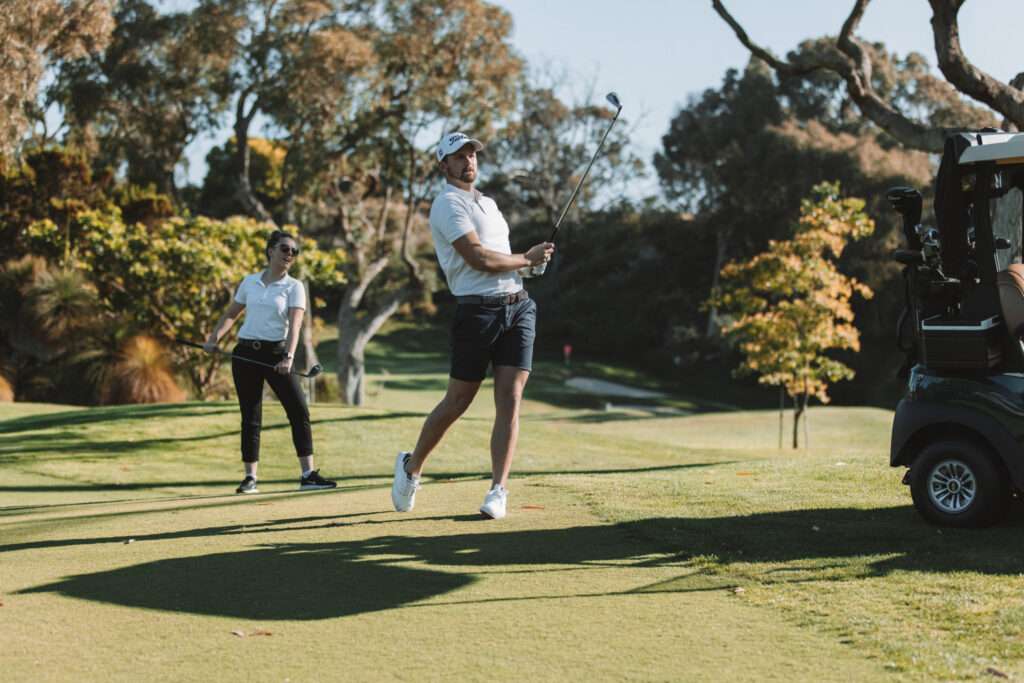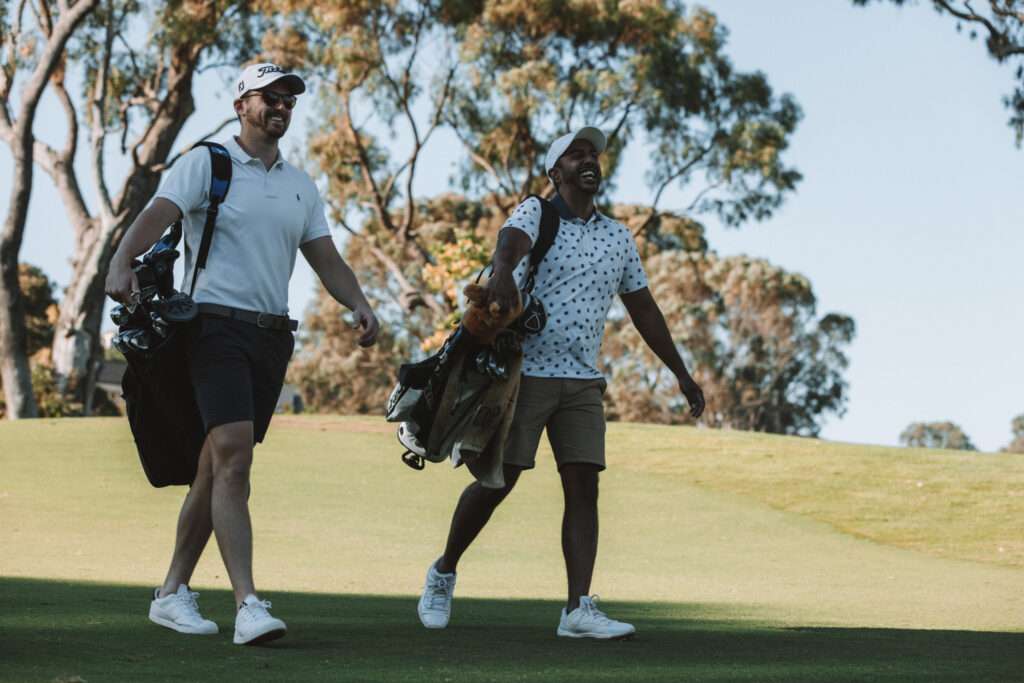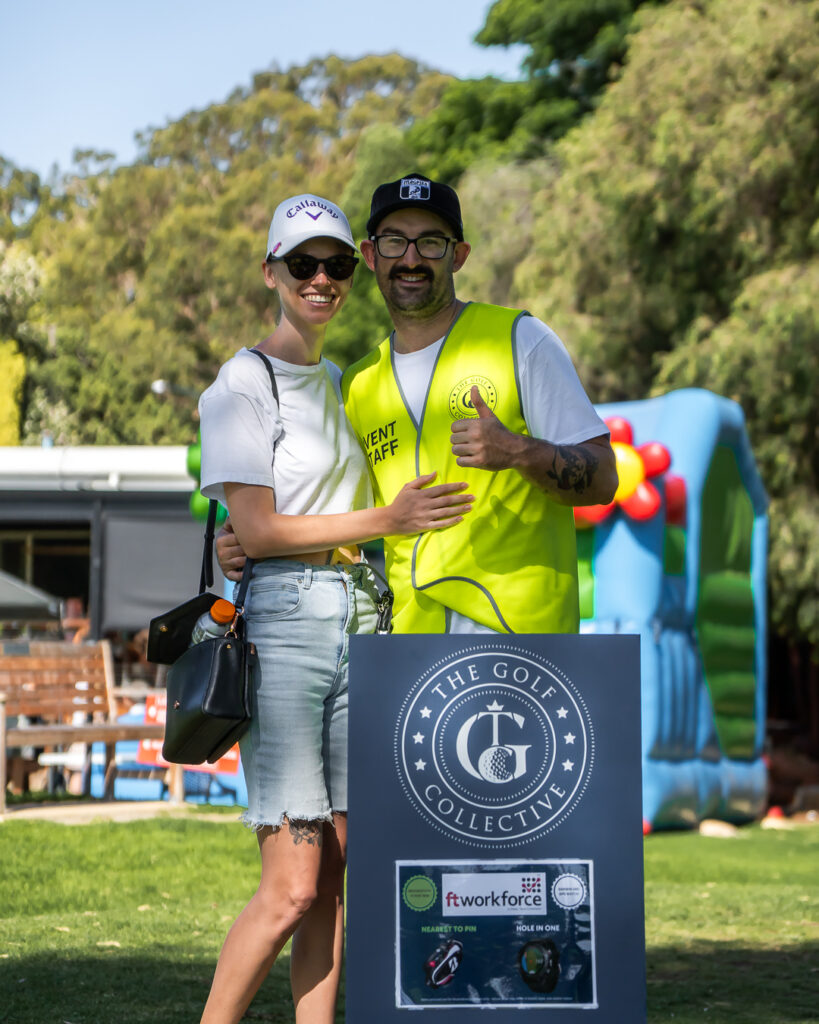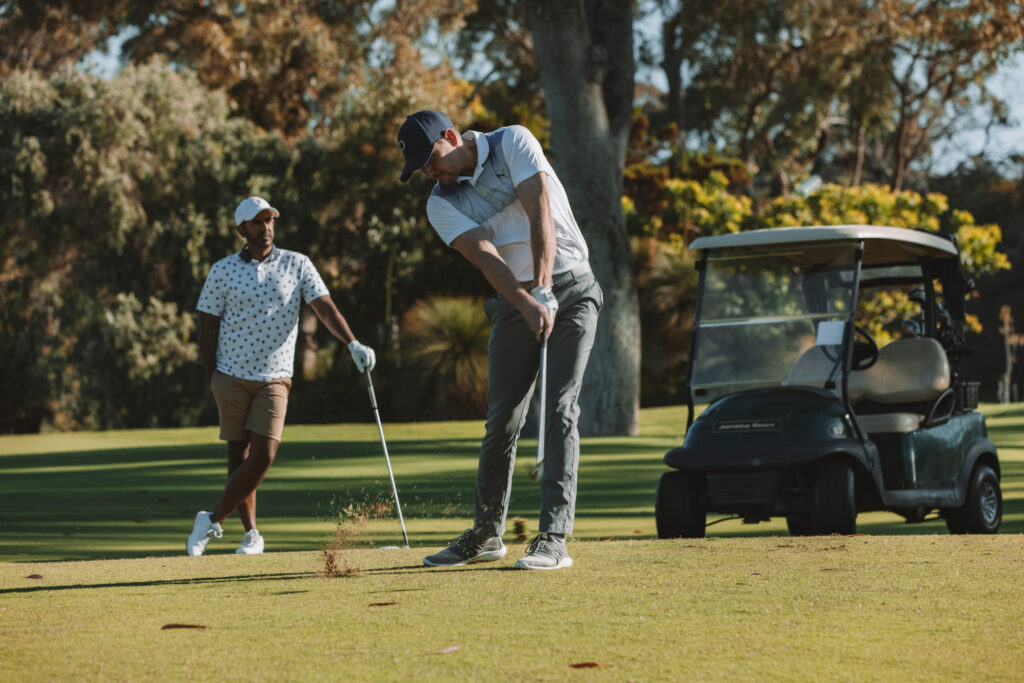How to Get the Most Out of Your Range Sessions
Ask any good player and they’ll tell you: what you do on the range matters just as much as what you do on the course. But too often, range sessions turn into a bucket-emptying exercise without purpose. If you want to improve your game, it’s time to stop just hitting balls and start practising with intention.
This guide will show you how to get the most out of your practice time, combining pre-shot routines, visualisation, and real on-course scenarios to help you play better when it counts.

Why Purposeful Practice Beats Just Hitting Balls
The key to a productive range session is quality over quantity. Hitting 100 balls without a plan won’t do nearly as much for your game as hitting 30 with purpose.
The Downfall of Mindless Practice:
- No structure leads to reinforcing bad habits.
- You lose focus quickly, leading to rushed swings.
- There’s no transfer to on-course performance.
Practising with clear intent helps you build confidence, consistency, and mental sharpness.
1. Always Start with a Warm-Up, Not Full Swings
Jumping straight into driver swings cold can hurt your body and your rhythm.
Smart Warm-Up Routine:
- Start with short pitch shots or half-swing wedges.
- Focus on tempo, balance, and solid contact.
- Gradually work up to longer irons and eventually driver.
This progression helps ease your body into the session and grooves good habits from the start.

2. Practice with Your Pre-Shot Routine
What you do on the range should mirror what you do on the course. That starts with your pre-shot routine.
Why It Matters:
- Builds consistency under pressure.
- Trains your mind to focus before every shot.
- Keeps you from falling into rapid-fire range swings.
How to Do It:
- Stand behind the ball.
- Take a deep breath.
- Visualise your shot.
- Step in and commit.
Use your routine on every swing, especially when switching clubs.
3. Visualise On-Course Scenarios
Don’t just hit balls to nowhere. Imagine you’re on the course.
Try This:
- Picture the first hole at your home course.
- Hit the shot you would hit from the tee.
- Then “play” your approach shot based on how it would have landed.
Doing this creates mental reps that translate to real-game decision-making.
Pro Tip: Pick targets on the range that simulate fairways or greens.

4. Block vs. Random Practice
Use a mix of practice types to develop both technique and adaptability.
Block Practice:
- Repeating one shot or club over and over.
- Great for working on mechanics or a swing change.
Random Practice:
- Switching clubs and targets after every swing.
- Better for simulating course conditions and staying mentally engaged.
Example Routine:
- 10 minutes of block practice with a 7-iron.
- 20 minutes of random play, alternating between driver, wedge, hybrid, etc.
5. Don’t Forget to Practice Your Short Game
The range isn’t just for full swings. If there’s a short game area, use it.
Focus Areas:
- Chipping and pitching from different lies.
- Bunker shots if available.
- Putting drills that challenge speed and line.
Your short game is where you save the most strokes, practice it with the same attention you give your driver.
6. Keep Score and Add Pressure
Introducing a little pressure helps simulate real play.
Pressure Games:
- Give yourself a target zone and only count shots that land in it.
- Hit five balls in a row with one club and see how many you strike cleanly.
- Challenge yourself with “up and down” drills from 30 yards.
Tracking performance adds purpose and keeps you engaged.
7. Breathe and Reset Between Shots
Practising how you manage nerves, pressure, and tempo is just as important as mechanics.
Simple Tips:
- Take a breath before every shot, just like you would on the course.
- Step away from the ball between swings.
- Reflect on each shot briefly, then move on.
This mental reset mirrors on-course rhythms and builds emotional control.
8. End With Confidence Builders
Finish your session on a high note. Don’t just hit balls until you feel tired or frustrated.
How to Finish:
- Go back to a club you’re confident with.
- Hit 3-5 well-struck shots in a row.
- Visualise a great final shot to end your session strong.
Ending with positivity builds trust and makes practice more enjoyable.

Final Thoughts: Make Every Shot Count
The range is where you train your mind and body to perform on the course. But it only works if you practice with intention.
Next time you head to the range, remember:
- Warm up properly.
- Use your pre-shot routine.
- Visualise every shot.
- Focus on quality, not just quantity.
With a smarter approach to your practice, you’ll build more than a swing, you’ll build confidence, control, and lasting improvement in your game.












